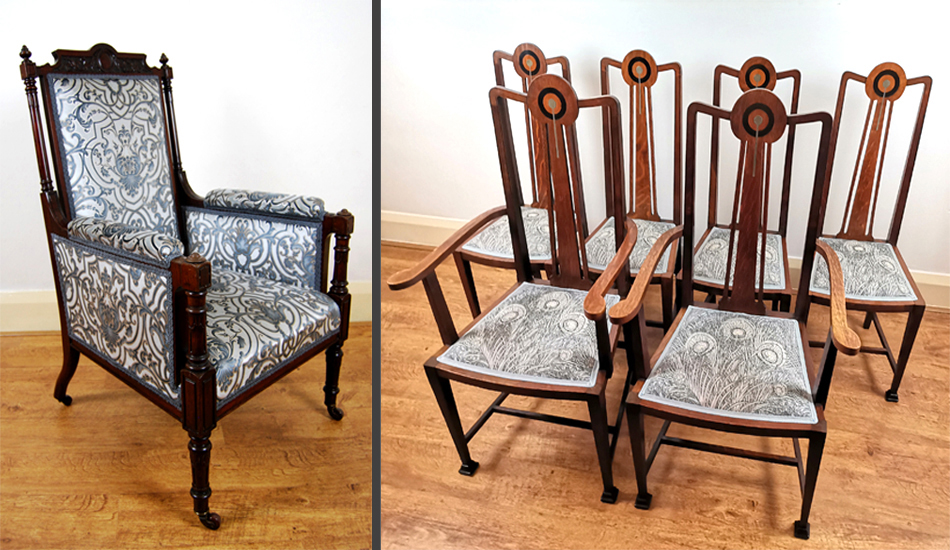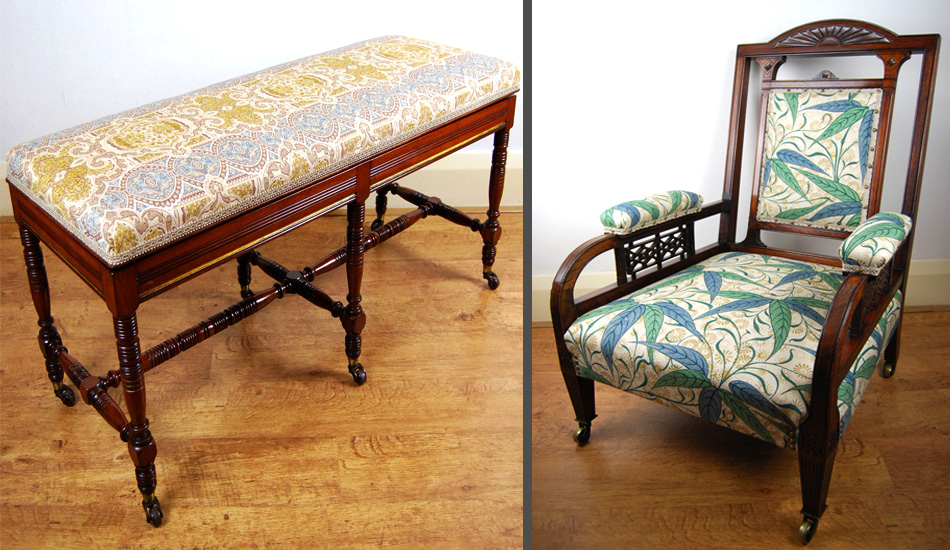
Traditional upholstery
Traditional upholstery is a laborious process that requires skill and paying particular attention to form and detail. The end result of this quality workmanship is an item of upholstered furniture that is pleasing to the eye, comfortable, functional and durable. read more.....
The upholstery process
The process of traditional upholstery involves a series of steps applied in a defined sequence. Yet, every individual type of antique seating would need to be approached differently, depending on period of the item of seating, frame shape and lines, and also determined by what part is being upholstered (seat, arm, inside back and outside back). read more.....
Caring for your item
Antique furniture restoration and re-upholstering are both expensive. Here are a few tips to protect your item as much as possible.
Caring for your item
Always handle items of antique seating furniture with care. This is important considering the age of chairs, armchairs and settees dating way back to the 1800s and early 1900s for Regency, William IV, Victorian and Edwardian items.
Some dainty pieces are delicate and are intended for occasional and diligent use. Avoid tilting on back legs of chairs, and never carry items from the legs, the top/head rails, side rails, and arm rests, as this may result in dislodging dowels and joints, or other breakages, and consequently damaging the item in question. Always carry items from beneath the seat.
If the item of seating furniture has castors, consider using castor cups if placing on laminated/ wooden floors to prevent scratches.
Do not leave the item of upholstered antique seating in direct sunlight or near heat sources. Sunlight exposure can result in the wood becoming bleached (colour fading - which can also happen to the fabric itself) and hence ruining the item. Heat exposure can result in the wood shrinking, cracking and splitting, and the glue melting resulting in loose joints. Fluctuation in humidity (too dry or too wet) is also harmful. Too dry air can be remedied by placing humidifiers or small cups of water. Damp conditions would need the use of a de-humidifier.
When cleaning your item, use a lint free cloth to dust and buff the wood. Every few months the original finish (patina) of the wood can be maintained by waxing the item with a good quality natural beeswax specific for antique furniture and a lint free cloth. At The Sitting Place® the items are waxed before carrying out the upholstering.
Protect the upholstery from spills, stains and other possible mishaps as much as possible, e.g. by applying throws when in use. Care instructions on the top fabric may be found by searching the fabric collection and design name on the official website of the fabric designer. The fabric designer and design name are given for every item of stock on The Sitting Place®.


Copyright © 2025 The Sitting Place®. All Rights Reserved.


